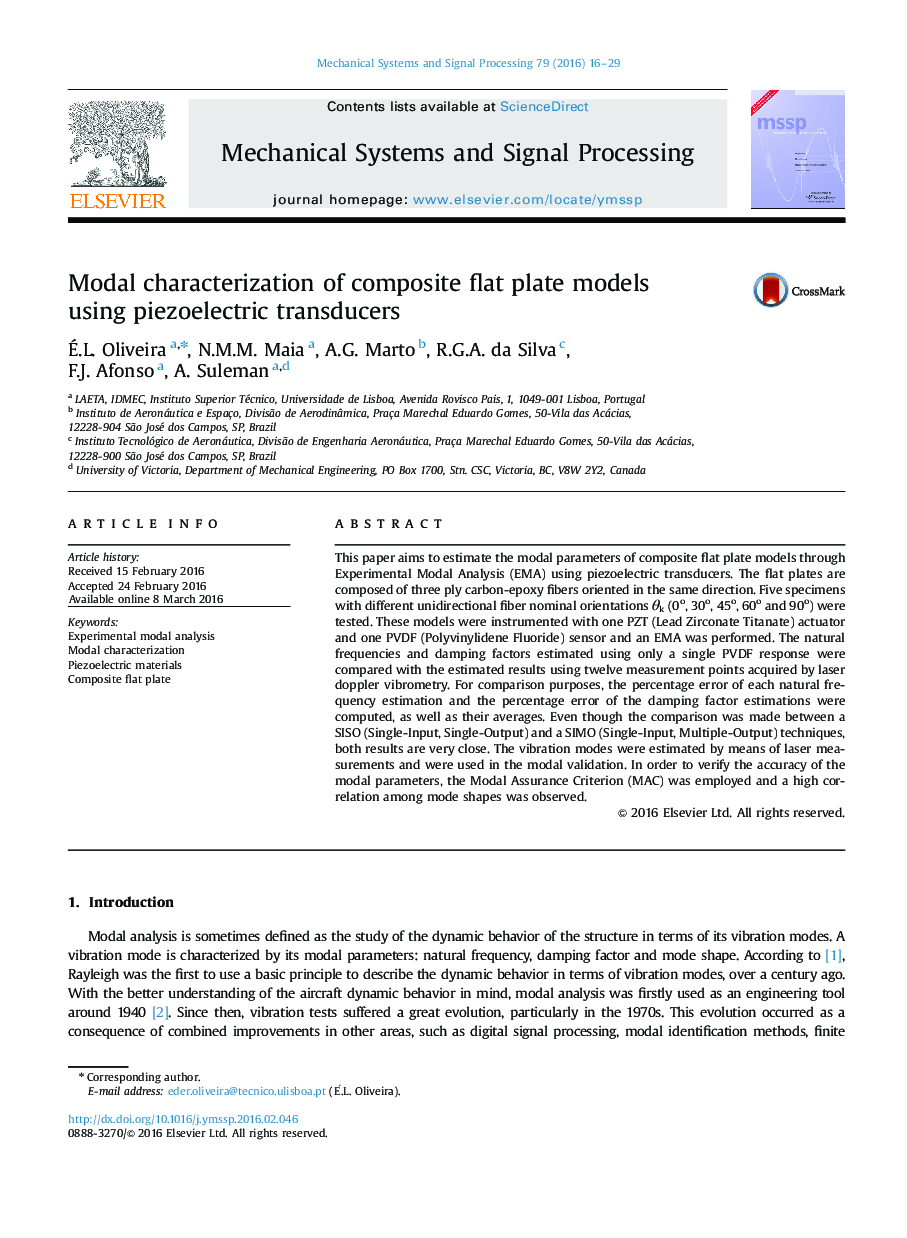| Article ID | Journal | Published Year | Pages | File Type |
|---|---|---|---|---|
| 559037 | Mechanical Systems and Signal Processing | 2016 | 14 Pages |
•Piezoelectric materials were employed as both sensor (PVDF) and actuator (PZT).•A single PZT actuator was able to excite all the vibration modes in the frequency range of interest.•The modal parameters achieved using a single PVDF were compared with 12 measurements obtained by means of laser vibrometry, showing good agreement.•Five composite flat plate models with different fiber orientations were tested.•Special attention in the data acquisition procedure was taken.
This paper aims to estimate the modal parameters of composite flat plate models through Experimental Modal Analysis (EMA) using piezoelectric transducers. The flat plates are composed of three ply carbon-epoxy fibers oriented in the same direction. Five specimens with different unidirectional fiber nominal orientations θk (0o, 30o, 45o, 60o and 90o) were tested. These models were instrumented with one PZT (Lead Zirconate Titanate) actuator and one PVDF (Polyvinylidene Fluoride) sensor and an EMA was performed. The natural frequencies and damping factors estimated using only a single PVDF response were compared with the estimated results using twelve measurement points acquired by laser doppler vibrometry. For comparison purposes, the percentage error of each natural frequency estimation and the percentage error of the damping factor estimations were computed, as well as their averages. Even though the comparison was made between a SISO (Single-Input, Single-Output) and a SIMO (Single-Input, Multiple-Output) techniques, both results are very close. The vibration modes were estimated by means of laser measurements and were used in the modal validation. In order to verify the accuracy of the modal parameters, the Modal Assurance Criterion (MAC) was employed and a high correlation among mode shapes was observed.
